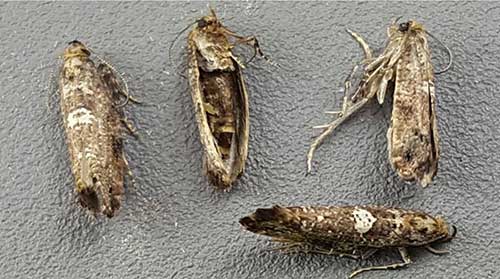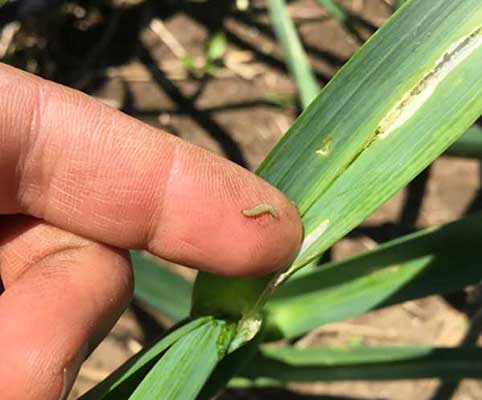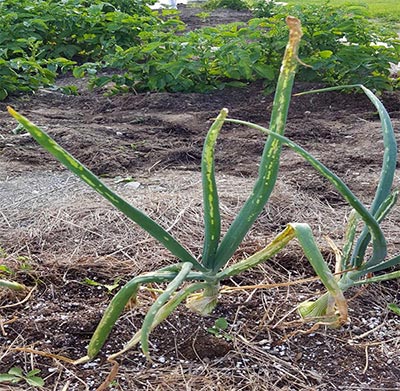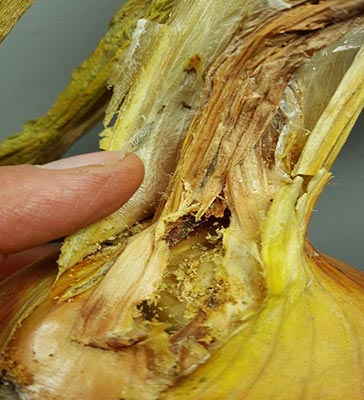
Pests: Leek Moth (Acrolepiopsis assectella)
Pest/disease identification and lifecycle, most common damage symptoms and crops affected:
Leek moth is a newer invasive pest of allium crops like onions, garlic, shallots and chives, and, as the name suggests, they are particularly fond of leeks. As with most moth pests the crop damage is from its larval caterpillar stage, of which there are two to three generations. Overwintered adults emerge in the spring and fly at night to both mate and seek out host plants to lay eggs on. Eggs are laid at the base of host plants, and larvae (caterpillars) emerge in about a week to begin feeding. After feeding for about two weeks, larvae pupate on the host plant, or very close nearby, emerging as adults 10 days later.
Feeding damage from the first generation of the year can stunt growth as leaves are attacked, and later generations can impact storage and saleability of onions, garlic and leeks as they eat their way in the direction of the bulb. If leek moth caterpillars are feeding on allium leaves around the time of harvest, they will move into the bulbs as leaves dry down during curing. Feeding damage and exit holes on bulbs while in storage can significantly reduce their marketability and open the bulbs to secondary infection. On flat-leaved garlic and leeks, the damage is often visible on the inside surface of the leaf (adaxial), near the mid-rib or in the garlic scape. On onions, damage can look similar to that of a leafminer because the caterpillar chews its way into the tubular hollow leaf, eating interior layers of the leaf but leaving the waxy outer layer intact (called “windowpane” damage). Similar-looking damage can occur from onion thrips, salt marsh caterpillar, or from chlorotic leaf spots from several diseases (e.g., botrytis, purple blotch).
Management options:
Cultural:
Organic control options are limited, though a predatory wasp has been released in Canada and will hopefully follow the pest across the border as well. The best practice for now is to use row cover or exclusion netting to prevent adult moths from laying eggs on your crop. Row cover can be removed during the day to cultivate or harvest, as adult leek moths only fly at night. If finding damage from first generation feeding, row cover or exclusion netting can still be valuable as it may inhibit the mating flights of adult moths trapped underneath it as they emerge from pupae.
Pesticides approved for use in certified organic production (as a last resort):
Spinosad (Entrust for commercial growers, Monterey Garden Spray or similar for home gardeners) may be effective if applied 7-10 days following a peak flight.
Please note: This information is for educational purposes. Any reference to commercial products, trade or brand names is for information only, and no endorsement or approval is intended. Pesticide registration status, approval for use in organic production and other aspects of labeling may change after the date of this writing. It is always best practice to check on a pesticide’s registration status with your state’s board of pesticide control, and for certified organic commercial producers to update their certification specialist if they are planning to use a material that is not already listed on their organic system plan. The use of any pesticide material, even those approved for use in organic production, carries risk — be sure to read and follow all label instructions. The label is the law. Pesticides labeled for home garden use are often not allowed for use in commercial production unless stated as such on the label.




